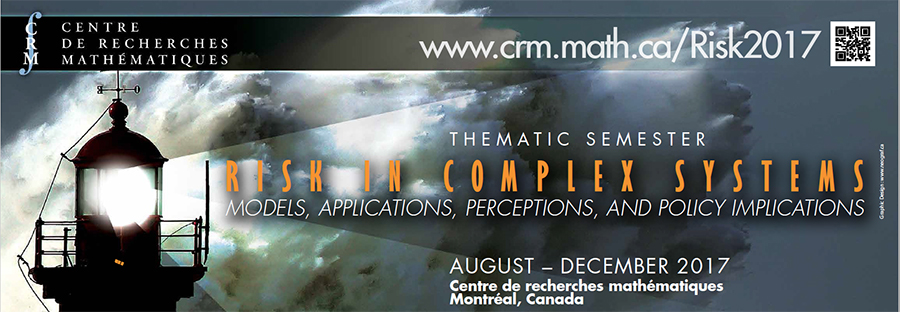AISENSTADT CHAIRS
Claudia Klüppelberg (Technische Universität München)
August 24 - September 7, 2017
Alexander J. McNeil (University of York)
September 13 - October 6, 2017
INTRODUCTORY ACTIVITY
SUMMER SCHOOL IN QUANTITATIVE RISK MANAGEMENT
August 21–24, 2017
Instructors:
— Rüdiger Frey (Wirtschaftsuniversität Wien)
— Marius Hofert (University of Waterloo)
WORKSHOPS
Environmental Risk Modeling and Extreme Events
August 28-31, 2017
Risk Measurement and Regulatory Issues in Business
September 11-14, 2017
Measurement and Control of Systemic Risk
September 26-28, 2017
Dependence Modeling Tools for Risk Management
October 2-5, 2017
Risk Modeling, Management and Mitigation in Health Sciences
December 11-13, 2017

